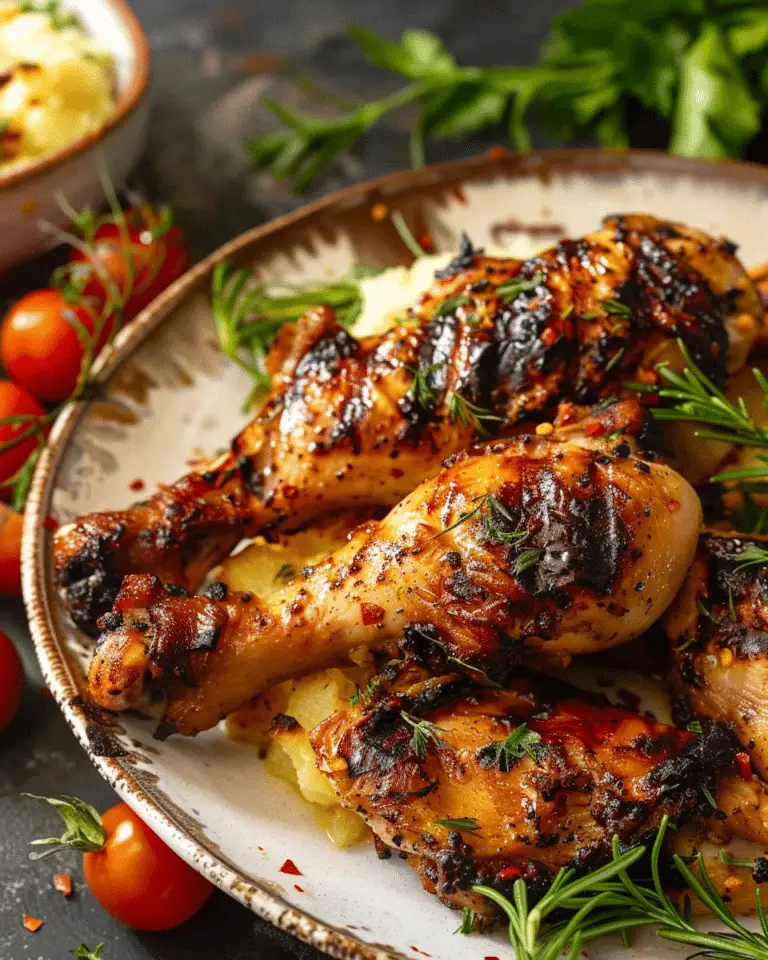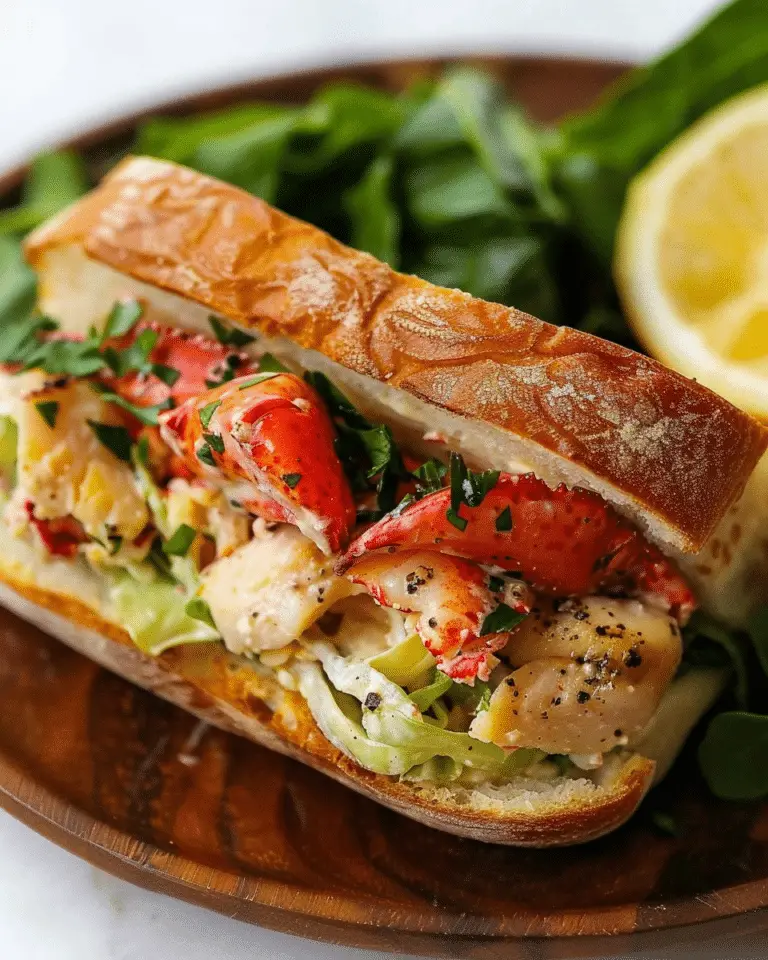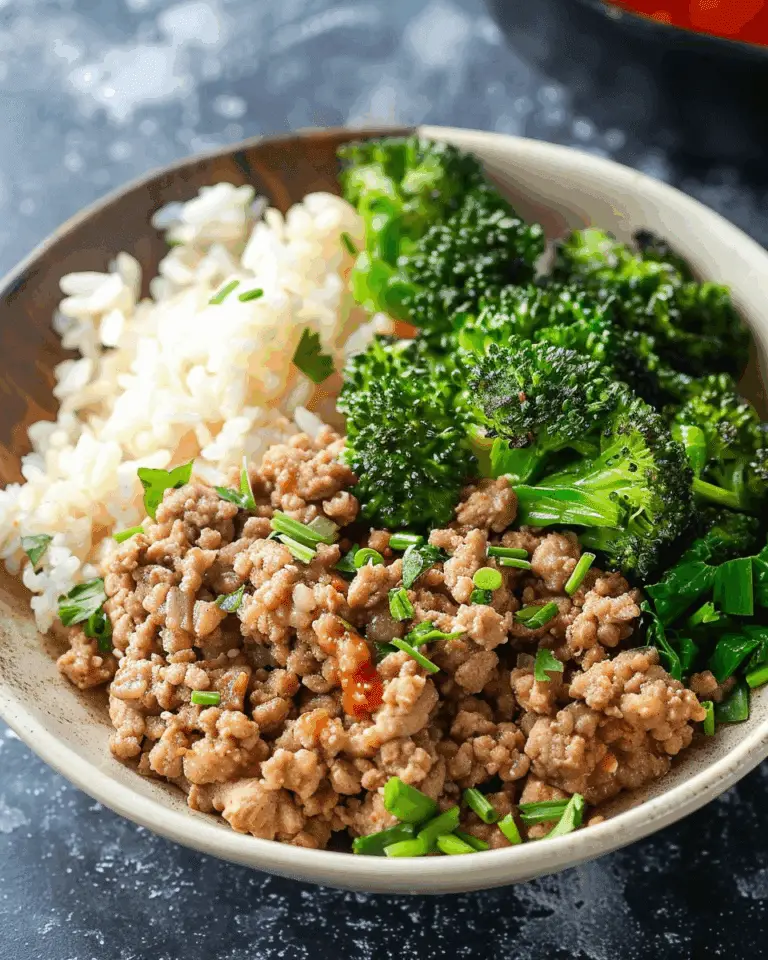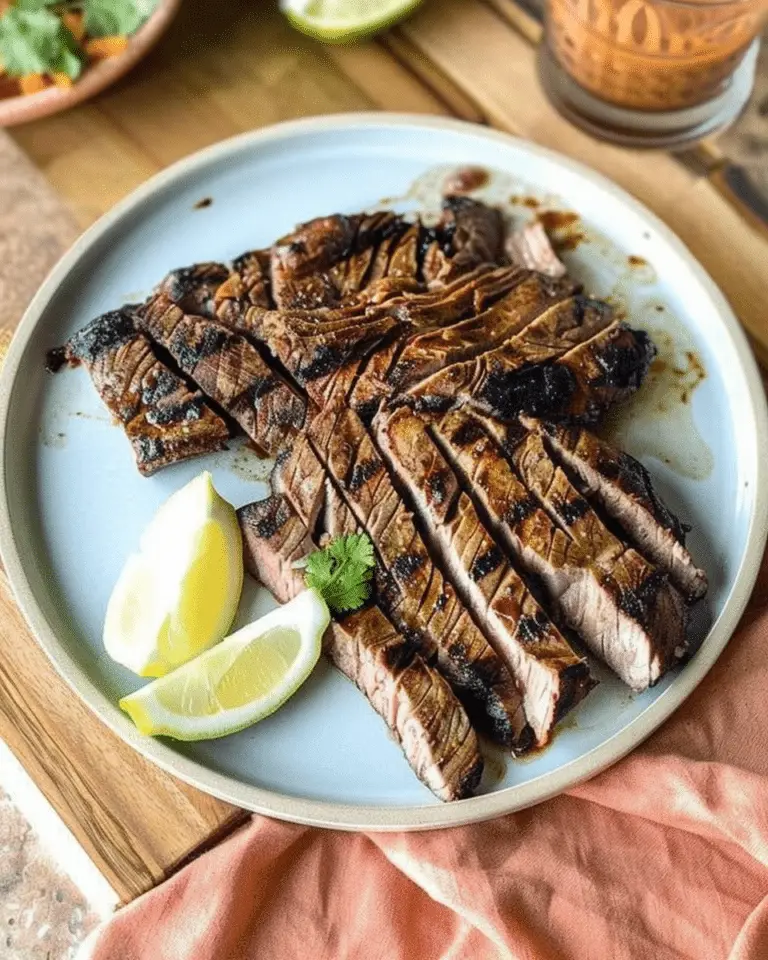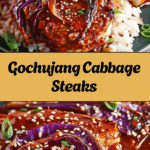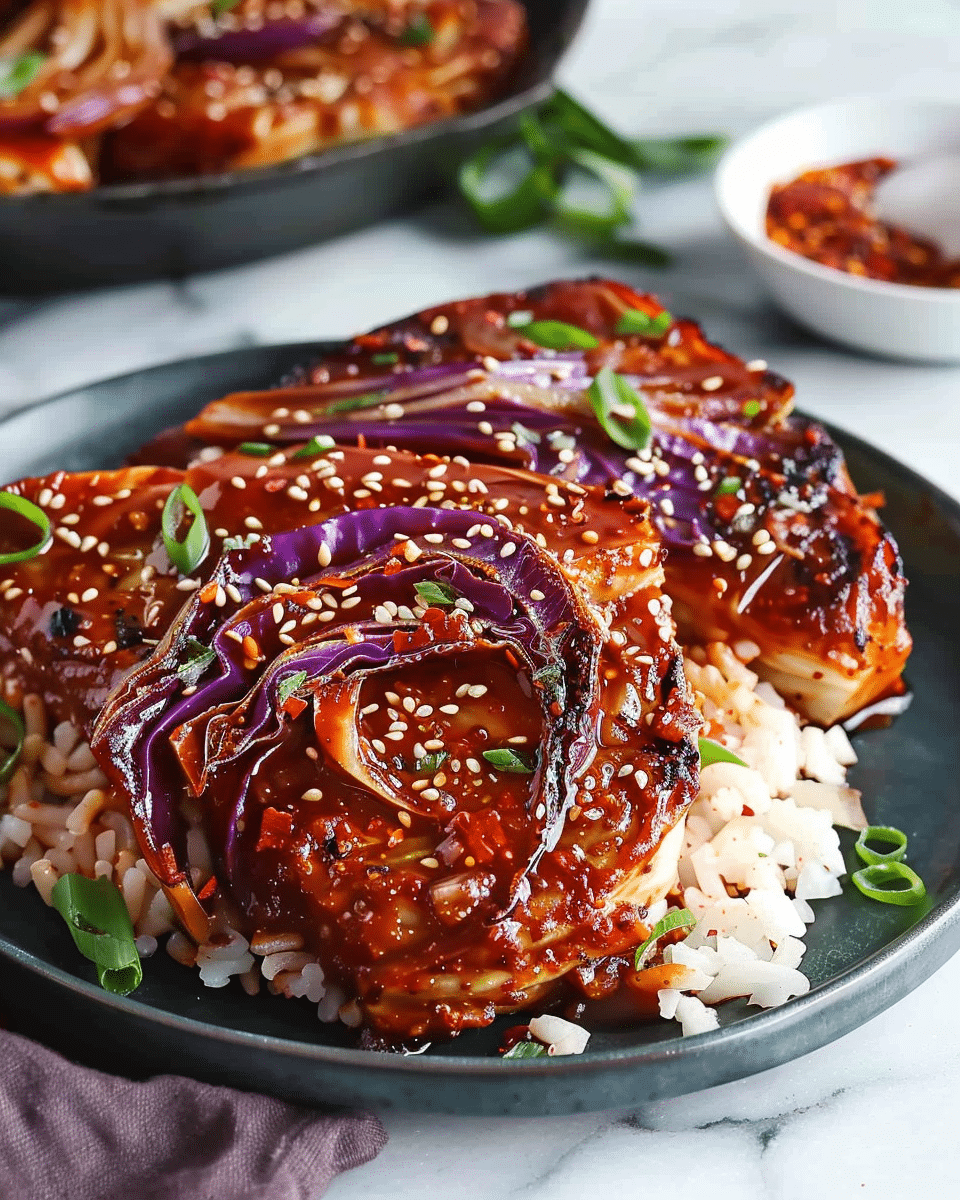
Why You’ll Love This Recipe
This recipe for Gochujang Cabbage Steaks is a perfect balance of spicy, savory, and slightly sweet flavors. The gochujang sauce adds a rich, umami depth that pairs beautifully with the natural sweetness of roasted cabbage. The cabbage steaks have a satisfying texture, with crispy edges and tender centers. It’s an easy-to-make dish that’s gluten-free, vegan, and packed with flavor. Plus, it’s an excellent way to turn humble cabbage into a show-stopping dish that everyone will enjoy!
Ingredients
-
1 large head of cabbage
-
2 tablespoons olive oil
-
2 tablespoons gochujang (Korean chili paste)
-
1 tablespoon maple syrup or honey (for a non-vegan option)
-
1 tablespoon soy sauce (or tamari for gluten-free)
-
1 teaspoon rice vinegar
-
1 teaspoon sesame oil
-
2 garlic cloves, minced
-
½ teaspoon ground black pepper
-
1 tablespoon sesame seeds (for garnish)
-
2 tablespoons chopped green onions (for garnish)
(Tip: You’ll find the full list of ingredients and measurements in the recipe card below.)
Directions
-
Preheat the oven: Preheat your oven to 400°F (200°C) and line a baking sheet with parchment paper.
-
Prepare the cabbage: Slice the cabbage into 1-inch thick “steaks” from the core, trying to keep the leaves intact. You should be able to get 3-4 good-sized cabbage steaks from one head of cabbage. Save any leftover cabbage for another use.
-
Make the gochujang sauce: In a small bowl, whisk together the gochujang, maple syrup, soy sauce, rice vinegar, sesame oil, garlic, and black pepper until smooth.
-
Prepare the cabbage: Place the cabbage steaks on the prepared baking sheet. Brush both sides of the cabbage with olive oil and then generously coat each steak with the gochujang sauce.
-
Roast the cabbage: Roast the cabbage in the preheated oven for 25-30 minutes, or until the edges are crispy and the cabbage is tender when pierced with a fork. Flip the cabbage steaks halfway through the cooking time for even browning.
-
Garnish and serve: Once done, remove from the oven and sprinkle with sesame seeds and chopped green onions. Serve immediately.
Servings and Timing
-
Servings: This recipe makes 3-4 servings.
-
Prep time: 10 minutes.
-
Cook time: 30 minutes.
-
Total time: 40 minutes.
Variations
-
Add a protein: Serve these cabbage steaks alongside grilled tofu, tempeh, or even a fried egg for added protein.
-
Adjust the spice level: If you prefer less spice, reduce the amount of gochujang, or substitute it with a mild chili paste or miso paste.
-
Make it extra savory: Add a drizzle of tahini or peanut sauce for a creamier, nuttier flavor.
-
Add vegetables: Roasting additional vegetables like carrots, sweet potatoes, or bell peppers on the same tray can make for a delicious, one-pan meal.
Storage/Reheating
-
Storage: Store leftover Gochujang Cabbage Steaks in an airtight container in the refrigerator for up to 3 days.
-
Reheating: Reheat in the oven at 350°F (175°C) for 10-15 minutes, or until heated through. You can also reheat them in a skillet over medium heat to crisp them up again.
FAQs
Can I use regular cabbage instead of napa cabbage?
Yes, you can use any type of cabbage, but napa cabbage will give a slightly more delicate texture. Regular green or purple cabbage will work well too.
How can I make this recipe spicier?
To add more heat, increase the amount of gochujang or add some chili flakes or fresh sliced chilies to the sauce.
Is this recipe vegan?
Yes, this recipe is vegan as long as you use maple syrup and tamari instead of honey and soy sauce.
Can I make this recipe ahead of time?
You can prep the cabbage and make the sauce ahead of time, then store them separately in the refrigerator. Roast the cabbage steaks just before serving for the best texture.
How do I store leftover cabbage steaks?
Store any leftover cabbage steaks in an airtight container in the refrigerator for up to 3 days. Reheat them in the oven or a skillet for the best results.
Can I freeze Gochujang Cabbage Steaks?
While it’s not ideal to freeze roasted cabbage, you can freeze the leftover cabbage steaks if needed. However, the texture may change after freezing and reheating.
Can I use a different sauce for the cabbage?
You can definitely experiment with different sauces, such as a miso-based sauce or a sweet soy sauce glaze, but the gochujang sauce is what gives this dish its unique, spicy kick.
How thick should the cabbage steaks be?
Aim for 1-inch thick slices to ensure that the cabbage gets crispy on the edges while remaining tender inside.
Can I make this dish on the stovetop instead of the oven?
While roasting in the oven is the best method for crispy cabbage steaks, you can also cook them in a large skillet. Sear the cabbage steaks on both sides over medium heat until tender and caramelized.
What can I serve with Gochujang Cabbage Steaks?
These cabbage steaks are delicious on their own or served with a side of rice, quinoa, or a fresh salad. They also pair well with a protein like grilled tofu, tempeh, or even chickpeas.
Conclusion
Gochujang Cabbage Steaks offer a perfect combination of bold flavors and satisfying textures. The spicy, savory gochujang sauce adds an exciting twist to the cabbage, making it a standout side dish or even a main course. This simple yet flavorful recipe is easy to prepare, customizable, and guaranteed to please both spice lovers and anyone looking to enjoy a new take on cabbage. Give it a try, and enjoy a deliciously unique meal!
Print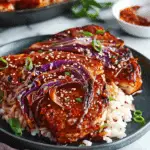
Gochujang Cabbage Steaks
5 Stars 4 Stars 3 Stars 2 Stars 1 Star
No reviews
- Author: Ava
- Total Time: 40 minutes
- Yield: 3-4 servings
Description
Gochujang Cabbage Steaks are a bold and flavorful dish that brings together the crunchy texture of cabbage with the fiery, savory taste of gochujang, a Korean chili paste. This recipe takes cabbage to the next level by roasting it until tender and caramelized, then coating it in a spicy-sweet sauce. Whether as a side dish or a main course, these Gochujang Cabbage Steaks are sure to impress with their unique flavor profile and satisfying texture.
Ingredients
- 1 large head of cabbage
2 tablespoons olive oil
2 tablespoons gochujang (Korean chili paste)
1 tablespoon maple syrup or honey (for a non-vegan option)
1 tablespoon soy sauce (or tamari for gluten-free)
1 teaspoon rice vinegar
1 teaspoon sesame oil
2 garlic cloves, minced
½ teaspoon ground black pepper
1 tablespoon sesame seeds (for garnish)
2 tablespoons chopped green onions (for garnish)
Instructions
- Preheat your oven to 400°F (200°C) and line a baking sheet with parchment paper.
- Slice the cabbage into 1-inch thick “steaks” from the core, trying to keep the leaves intact. You should get 3-4 good-sized cabbage steaks from one head of cabbage. Save any leftover cabbage for another use.
- In a small bowl, whisk together the gochujang, maple syrup, soy sauce, rice vinegar, sesame oil, garlic, and black pepper until smooth.
- Place the cabbage steaks on the prepared baking sheet. Brush both sides of the cabbage with olive oil, then generously coat each steak with the gochujang sauce.
- Roast the cabbage in the preheated oven for 25-30 minutes, or until the edges are crispy and the cabbage is tender when pierced with a fork. Flip the cabbage steaks halfway through the cooking time for even browning.
- Once done, remove from the oven and sprinkle with sesame seeds and chopped green onions. Serve immediately.
Notes
- Add a protein: Serve these cabbage steaks alongside grilled tofu, tempeh, or even a fried egg for added protein.
- Adjust the spice level: If you prefer less spice, reduce the amount of gochujang, or substitute it with a mild chili paste or miso paste.
- Make it extra savory: Add a drizzle of tahini or peanut sauce for a creamier, nuttier flavor.
- Add vegetables: Roasting additional vegetables like carrots, sweet potatoes, or bell peppers on the same tray can make for a delicious, one-pan meal.
- Prep Time: 10 minutes
- Cook Time: 30 minutes
- Category: Main Course
- Method: Roasting
- Cuisine: Korean
Nutrition
- Serving Size: 1 steak
- Calories: 120
- Sugar: 4g
- Sodium: 450mg
- Fat: 7g
- Saturated Fat: 1g
- Unsaturated Fat: 6g
- Trans Fat: 0g
- Carbohydrates: 15g
- Fiber: 4g
- Protein: 3g
- Cholesterol: 0mg


